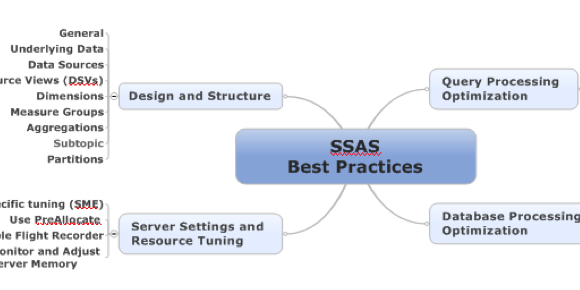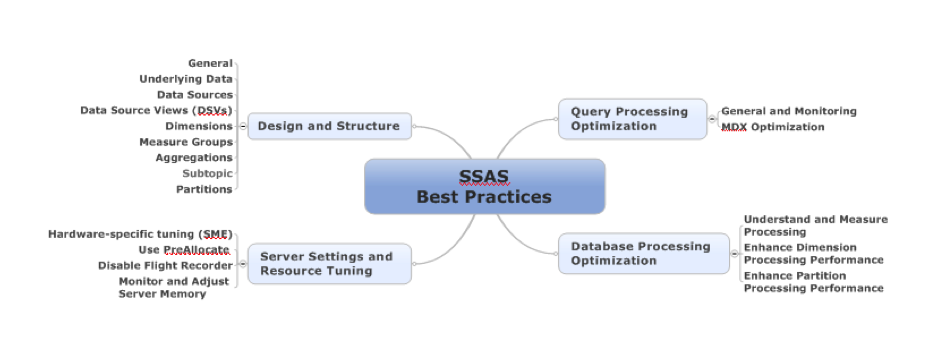 |
|
| Name: William E. Pearson III | |
| Title: Independent Business Intelligence Architect & Consultant (Island Technologies Inc.), Microsoft SQL Server MVP, SQL Server Analysis Services Maestro, Certified Public Accountant | |
| Started using Mindjet: 2005 | |
| Social links: LinkedIn, Twitter |
|
How did you first get into mind mapping?
I realized, at age 17, that I was seriously over my head when I found myself in U.S. Naval Nuclear Power School. There, I was often confronted with complex concepts and was expected to grasp – and retain – the curriculum rapidly. I quickly found that “drawing out” the material brought the concepts to life. When I was later assigned to a missile submarine, I had a great deal of time to perfect my reading and learning skills, both with technical subject matter and classical literature, a life-long interest. Mapping out concepts became second nature for me anytime I wanted to “deliberately” study something, and I reinforced the habit through constant use in college. In the mid-90’s, I came across Tony Buzan’s extensive work with mind mapping, and began to refine my skills gradually to what they are today.
How did you hear about Mindjet?
I came across Mindjet circa 2004, finding mention of it in my regular searches on mind mapping on the Web. I got a copy of the application and it quickly replaced several other “tools” I had at that time, due to its outstanding efficiency and myriad other distinguishing features. The ease of use alone makes me reach for it more and more often – even for small sessions where I might not have thought to map out a less critical subject, in the interest of time.
Mindjet has been my mapping tool of choice for several years. When it comes to documenting – and enhancing – thought itself, I settle only for “best of class!”
What do you primarily use it for?
I use Mindjet in many facets of my professional life, as well as within any study or research effort where I want to enhance my comprehension and retention. As a business intelligence architect, I use Mindjet to develop, plan and execute:
- Specialized engagements (like the Best Practices audits I perform regularly for Microsoft SQL Server Analysis Services and other clients);
- Business intelligence implementations and other consulting projects (the core of my practice);
- Courses and presentations I give to business intelligence practitioners, and accounting and finance organizations, worldwide;
- Articles that I write for various regular columns and other periodicals;
- Resolution of problems and challenges within client and associate environments through the enforcement of structured thought.
I also make frequent use of Mindjet to create mind maps that I employ within presentations and articles to efficiently convey concepts to attendees and readers. So I use Mindjet both to learn and to teach.
From the perspective of my personal interests, I use Mindjet to map out such things as modernist literature, particularly writers like Faulkner, James, Woolf and Proust. I often use it to create mind maps to help me visualize, at a glance, and better understand the sometimes confusing construction of these works, as well as the methods employed creating those structures.
What is your favorite feature and why?
The greatest single, albeit general, feature of Mindjet, in my experience, has been the fact that it supports rapid productivity enhancement. To be able to generate quick maps via a simple, orderly interface, and to share the output instantly, induces me (and my clients) to use it more, and to experience a “productivity ripple” through all our activities and processes. I have recently found the advances in collaboration opportunities to inspire more, and better, teamwork. A recent example: using Mindjet to permit centralization of a virtual, collaborative Agile “whiteboard” environment that allows teams to constantly improve, inspect and adapt, among many other things, in an unrestricted way. New mobile capabilities appear to offer a natural extension of the “best of class” features that Mindjet offers – and much promise for taking our brainstorming, planning and designing efforts beyond the distracting, often disruptive systems within which we’ve had to perform these functions in the past.
Is there anything the tool helps with that was unexpected?
I’ve found, over the years that I’ve used Mindjet, an inducement to more collaborative thought than I had imagined possible. As I’ve said, efficient brainstorming with Mindjet makes me want to do it more, and for a wider range of subjects – even smaller ones. This not only works well in driving more collaboration between people, but, in my experience, in driving synergies in the process of brainstorming as a cycle: the more I do, the more fluid and efficient I become in doing it. Once a given team becomes accustomed to mind mapping within a client environment, it becomes easy and enjoyable to work together to generate plans and solutions, and Mindjet is intuitively easy to use even for those who have never worked with mapping processes or applications.
Tell us about your map.
This map is a very simple example of using Mindjet for planning and executing a “Best Practices” audit for an existing SQL Server Analysis Services implementation. I’ve been doing audits like this in various areas of business intelligence for years, and I found some time ago that introducing Mindjet into the entire cycle makes for a more informed (and appreciative and cooperative) client. I introduce the objectives of the audit with a map such as this one (the map for most engagements drills to significantly more granular detail, based upon client and implementation specifics), and we use the map throughout the various phases of the engagement, from regular progress updates to summarizing findings and suggesting remedial actions at the end. We keep “snapshots” of the map to indicate its history of extensions or other changes, and we can export the map to Microsoft Word and other apps, at any given point in the cycle, to generate progress reports to management and others.
[Click for full sized image]
—————————————————————————————–
William E. Pearson III, SQL Server MVP, SQL Server Analysis Services Maestro, CPA, CITP, CGMA, CMA, CIA, MCDBA, MCSE, is a consultant, author, mentor and business intelligence architect who has been working with business intelligence for over 20 years, and with the integrated Microsoft Business Intelligence solution since its inception. Bill has been awarded the Microsoft Most Valuable Professional multiple times for his technical experience implementing Microsoft BI, as well as his contributions to the community as an author and speaker. Bill’s recent series’ include the Stairway to MDX and Stairway to PowerPivot and DAX columns at SQLServerCentral.com, and he presents regularly at SQL Saturdays and other diverse events worldwide. Bill is a member of the Boulder BI Brain Trust.
Here at Mindjet, we know the value of sharing ideas. It’s just like philosopher Michel de Montaigne said way back in the 1500s: “It is good to rub and polish our brain against that of others.” The Mindjet User Spotlight series aims to help that little endeavor along by bringing your stories and experiences with Mindjet to the forefront. If you’ve got one to share, don’t be shy! Give us a shout.


